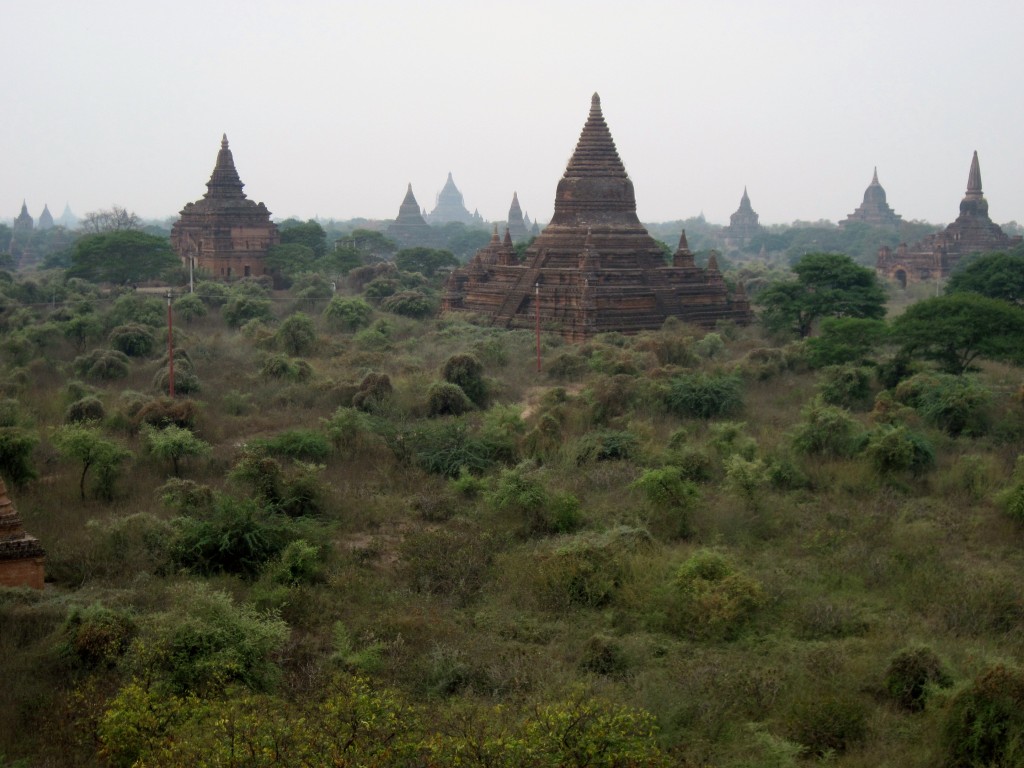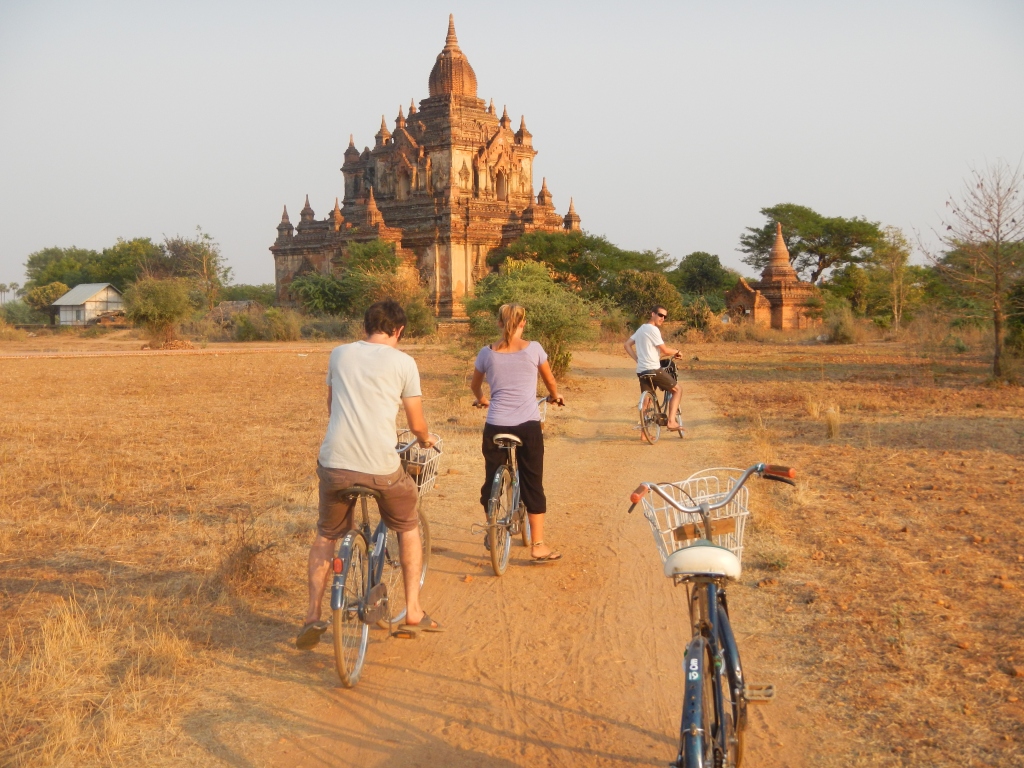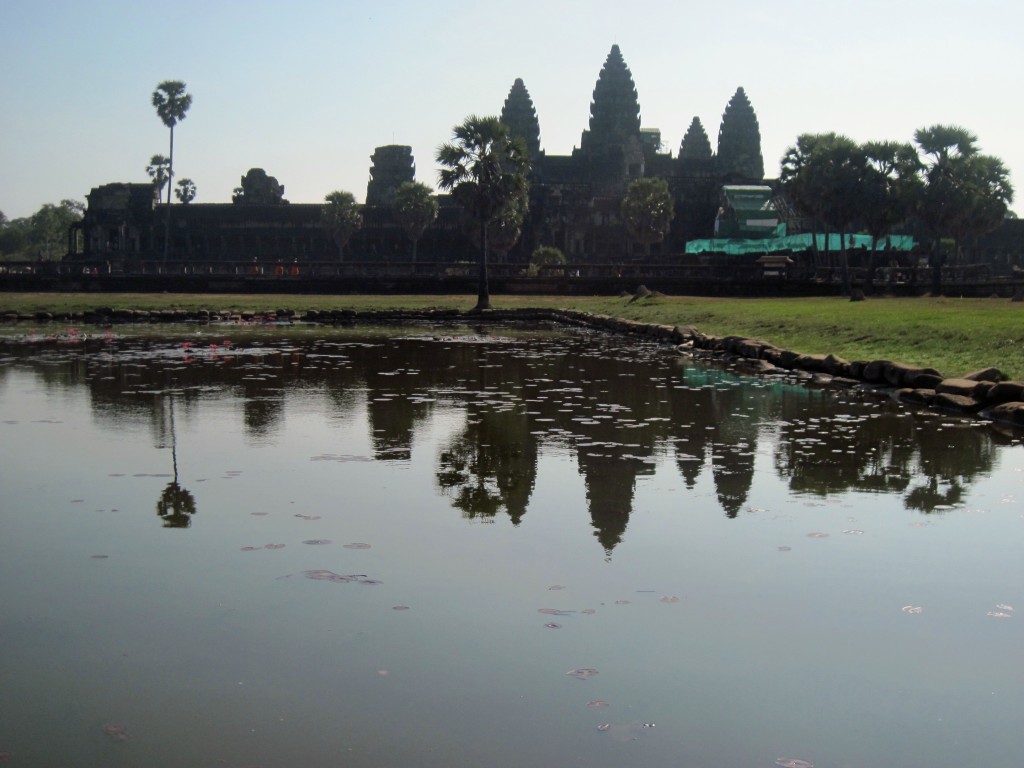
The quintessential image of Angkor Wat. This Cambodian monument is also outlined on the country’s flag.
Some 900 years ago, King Suryavarman II created the Khmer empire’s largest stone tribute to the Hindu religion – modern Cambodia’s Angkor Wat.
His successors promptly converted to Buddhism and out-built the old deities with a swath of additional temples and a new capital city, Angkor Thom.
But, in a hapless example of history repeating, Jayavarman VIII later returned to the Hindu faith and defaced many of the structures. What he left was a 400 kilometer region of broken-nosed Buddahs and crumbling walls.
Several borders over, his Burmese neighbors spent the 11th and 12th centuries creating their own testaments to religious devotion, after King Anawrahta united the country under the discipline of Theravada Buddhism. The ensuing rulers competed for architectural fervor, dedicating an eventual 42 kilometers around the city of Bagan to stupas and temples. Of the original 13,000, approximately 2,200 still stand today.
History, masonry and myth make it difficult to compare these two international monuments.
But if you are an independent traveler on a limited itinerary, or show symptoms of the illness, devotional overkill, then visiting one will still provide you with an unforgettable experience.
Remove the emotionally-appealing elements and let these basic, physical factors help you decide:
The Fees
- Angkor: Entrance passes are priced per day: $20 for one day, $40 for three days, or $60 for a full week. The three-day and seven-day passes can be used non-consecutively, helping to break up your temple visit with some down-time in between.
- Bagan: All visitors must pay a $10 entrance fee for the duration of one week; visitors may enter as much or as little as they like during those seven days.
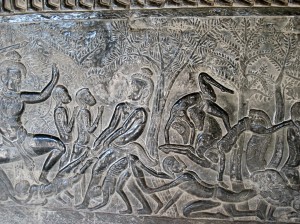
An Angkorian bas relief, shiny from the touches of devotees, shows the 32 hells from Indian tradition.
The Access:
- Angkor: Siem Reap, the nearest town, is 6 kilometers from the main Angkor temples; the outlying structures are categorized as the Little and Big Circuits, and stretch a further 12- 40 kilometers from Siem Reap. The most distant is Beng Mealea, 80 kilometers away.
- Bagan: The plain is wrapped by a main road that links three accommodation centers, Nyaung U, Old Bagan and New Bagan. All three locations are within two miles of the nearest temple.
The Transport
- Angkor: Biking is a cheap and popular option, with basic rentals costing $1 a day and roads being paved or well-graveled; however, I don’t know many backpackers who would willingly pedal 40-160 kms a day in Cambodia’s humidity. The temples also can be visited by single or multi-day hire of a tuktuk or moto taxi. These options come with a semi-knowledgeable guide and allow guests to save time and energy. For an additional thrill (and cost), you can visit the ancient ruins via helicopter.
- Bagan: Biking is a favorite here, with the two-wheelers costing $1-2 a day. Roads are paved between Nyaung U, Old and New Bagan ; but, once you leave the main cement, paths to individual pagodas are several inches-deep in sand, and an effort to traverse. Visitors can hire a local driver and horse cart for slightly more, which is a good way to put your kyats directly back into the community. Plus, the horse carts come with shade, pillows and an informed driver. If you’re after even more bragging rights, Bagan can be toured by hot air balloon.
The Amenities
- Angkor: A ban on commercial stalls keeps noodle tables and sit-down eateries a bit outside of the camera’s eye.
- But don’t worry, if you find yourself perspiring as you hike the steps of Bayon temple, there will always be someone with a traveling ice bucket and cold drinks. Bathrooms are sign-marked near Angkor Wat, but difficult to find in other areas.
- Bagan: Because the three towns are just a quick cycle or trot away, options for dining and drinking are plentiful. Guests will have their pick of pricy restaurants, vegetarian cafes and temporary noodle-stalls. Bathrooms, on the other hand, are hard to locate.

A portion of a painted mural at Phayathonezu temple; only 300 Bagan structures still contain the original artwork.
The Restoration
- Angkor: In 1992, UNESCO declared the entire 400kilometers of Angkor’s ruins to be a World Heritage Site; a portion of the entrance fee goes towards the slow but historically accurate restoration of the buildings and sculpture-work.
- Bagan: UNESCO refuses to declare the plains of Bagan a World Heritage Site because previous restoration work, implemented by past Burmese governments, has been done “in an unhistorical way.” This is obvious when looking at some of the smaller stupas, which may contain mismatched types of stone, or simply appear to be brand new. Government authorities say they are following original designs; international archeologists disagree.
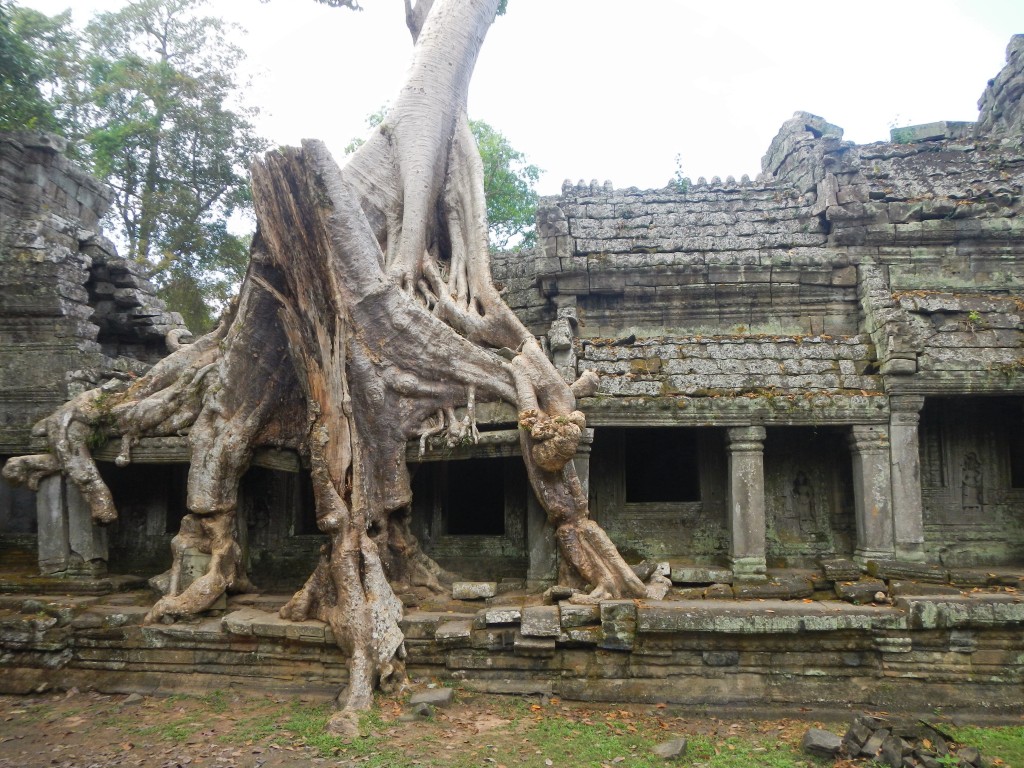
Nature is left unchallenged at Preah Khan, giving visitors the same sense of discovery that Henri Mahout felt when he stumbled upon the monument in the mid-1800s.
The Crowds
- Angkor: Everyone will warn you, “The crowds killed Angkor Wat.” And yet, the presence of a hundred package tourists pouring off a bus signifies something that everyone must visit. No, you’ll never get that perfect, empty, sunrise snapshot; but, the further you venture into the Big Circuit and outer temples, the more space you’ll have to yourself. Because buses do not typically drive beyond Angkor Tom, you’re guaranteed a quieter, more reflective experience if you save a few visits for distant temples. These will often afford you the sense of re-discovery, as you enter the over-grown ruins by yourself.
- Bagan: The rule of the tour bus applies here, as well; those big, popular temples along the main highway will be over-crowded with excitable grannies and loud flashpackers. But buses could never battle the sandy routes into Bagan plain, so ride on. You’ll find peace and isolation, if you just go further off the pavement. Besides, Burma is still somewhat outside of the average traveler’s agenda, so you’ll find a smaller population of visitors, overall. And the perpetually hazy skies will mar any postcard photo opportunities you had in mind, anyway.
The Hustle
- Angkor: There’s no disputing the clever sales pitch of a Cambodian child with a basket of postcards and krama scarves; and, they are unavoidable at all of Angkor’s temples. Also beware of uniformed policemen, off-duty but trying to compensate for low wages by selling magnets or offering personal tours.
- Bagan: While the luckier book and puppet sellers maintain semi-official stalls surrounding those temples linked to the main road, touts do not travel further afield. Don’t be tricked by the “free to look” line many will use to lure you over to their lacquer-ware jewelry. Nor the painters, who promise you the canvases are “all original work.” While some may be fresh productions, a glance at other artists will convince you they are merely fresh copies.
The End
Again, comparing two distinct locations of cultural and historical significance is like asking the king of Troy which Greek goddess is most beautiful; a question that’s bound to lose favor with someone. Both Angkor and Bagan are worthy of a visit, especially if you do so without too many preconceived ideas. Expect to be disappointed, and you will surely, surprisingly, find yourself awed at the craftsmanship and architecture created by ancient human hands.
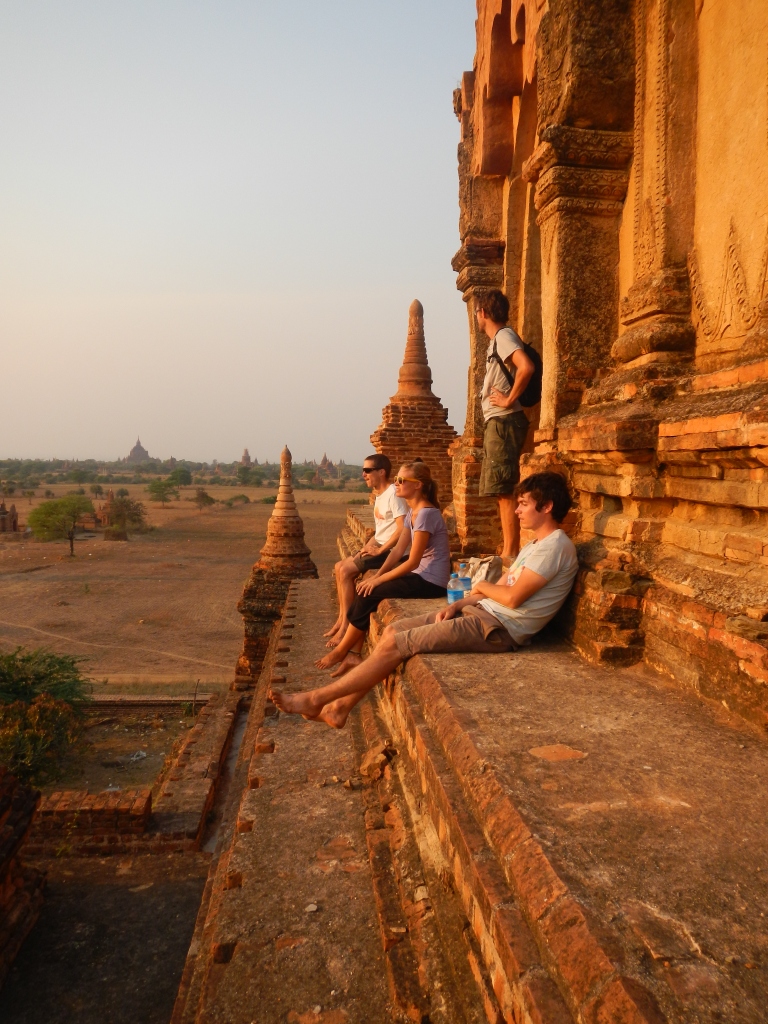
Both Bagan and Angkor Wat allow visitors onto the tops of certain temples; stake out your spot early and watch the sun set over 900 years of history.

Kelli Mutchler left a small, Midwest American town to prove that Yanks can, and do, chose alternative lifestyles. On the road for five years now, Kelli has tried news reporting and waitressing, bungy jumping and English teaching. Currently working with Burmese women refugees in Thailand, she hopes to pursue a MA in Global Development. Opportunities and scenes for international travel are encouraged on her blog, www.toomutchforwords.com.

